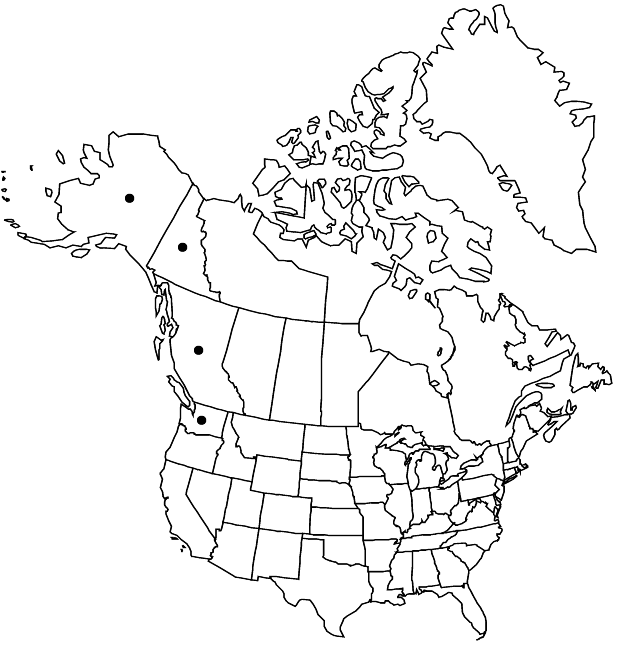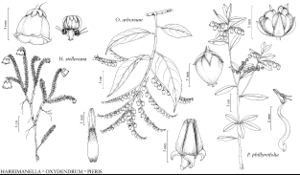familyEricaceae
subfamilyEricaceae subfam. Harrimanelloideae
genusHarrimanella
speciesHarrimanella stelleriana
Difference between revisions of "Harrimanella stelleriana"
Proc. Wash. Acad. Sci. 3: 574. 1901 ,.
Common names: Alaska moss heather
Illustrated
Basionym: Andromeda stelleriana Pallas Fl. Ross. 1(2): 58. 1789
Synonyms: Cassiope stelleriana (Pallas) de Candolle
Treatment appears in FNA Volume 8. Treatment on page 495.
FNA>Volume Importer |
imported>Volume Importer |
||
| (2 intermediate revisions by 2 users not shown) | |||
| Line 7: | Line 7: | ||
}} | }} | ||
|common_names=Alaska moss heather | |common_names=Alaska moss heather | ||
| + | |special_status={{Treatment/ID/Special_status | ||
| + | |code=F | ||
| + | |label=Illustrated | ||
| + | }} | ||
|basionyms={{Treatment/ID/Basionym | |basionyms={{Treatment/ID/Basionym | ||
|name=Andromeda stelleriana | |name=Andromeda stelleriana | ||
| Line 54: | Line 58: | ||
|publication title=Proc. Wash. Acad. Sci. | |publication title=Proc. Wash. Acad. Sci. | ||
|publication year= | |publication year= | ||
| − | |special status= | + | |special status=Illustrated |
| − | |source xml=https:// | + | |source xml=https://bitbucket.org/aafc-mbb/fna-data-curation/src/2e0870ddd59836b60bcf96646a41e87ea5a5943a/coarse_grained_fna_xml/V8/V8_967.xml |
|subfamily=Ericaceae subfam. Harrimanelloideae | |subfamily=Ericaceae subfam. Harrimanelloideae | ||
|genus=Harrimanella | |genus=Harrimanella | ||
Latest revision as of 23:47, 5 November 2020
Stems forming dense, soft mats; branches lax, tips ascending. Leaves divergent, not imbricate; blade linear-oblong, 3–5 × 1–2 mm, apex obtuse to broadly acute. Pedicels to 1 cm, barely exceeding leaves at anthesis. Flowers erect to horizontal; sepals oblong-ovate, ca. 3 mm; corolla white or tinged with pink, ca. 6 × 5 mm, lobes distinct for ca. 1/2+ their lengths, tips not recurved; stamens to 3 mm. Capsules 4–5 mm diam.
Phenology: Flowering Jun–Aug.
Habitat: Alpine meadows, rocky slopes, subalpine or alpine
Elevation: 0-1900 m
Distribution

B.C., Yukon, Alaska, Wash., Asia.
Discussion
Selected References
None.
Lower Taxa
None.
